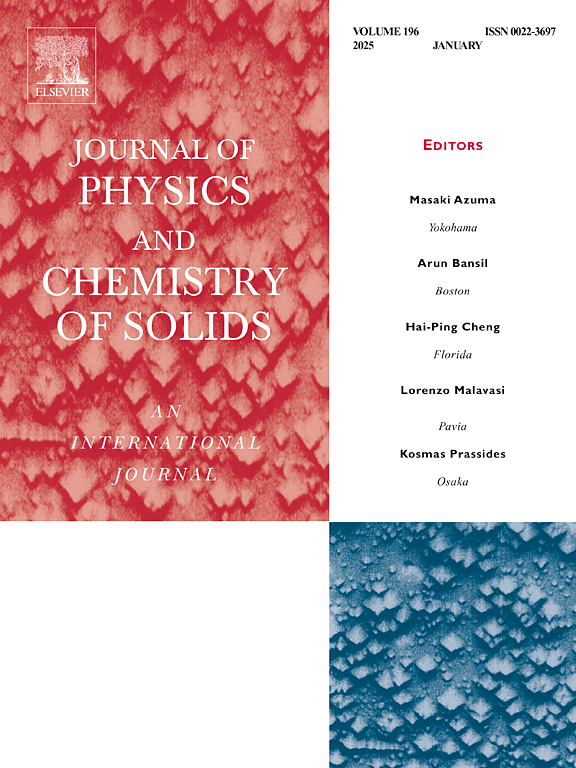An investigation of the biaxial strain on structural, opto-electronic and mechanical properties of 2D GaGeTe monolayer from a theoretical perspective using DFT
IF 4.3
3区 材料科学
Q2 CHEMISTRY, MULTIDISCIPLINARY
引用次数: 0
Abstract
Density functional theory (DFT) has been employed to study the effect of uniform biaxial strain (both tensile and compressive strain) on structural, electronic, and optical properties of GaGeTe monolayer using generalized gradient approximation. The structural characteristics are explored through the variations in interatomic distances and cell parameters, while the electronic properties are investigated through the distribution of energy states and atomic orbitals in the electronic band structure and projected density states plots. Our findings reveal that GaGeTe monolayer exhibits a semiconducting nature and this nature remains consistent in the presence of both tensile and compressive biaxial mechanical strain from ±2 % to ±5 % strain values. When the applied biaxial strain approaches ±10 %, a transition from semiconducting to metallic nature takes place. The optical properties of pristine as well as strained 2D GaGeTe monolayer are determined through epsilon.x module of Quantum Espresso (QE) simulation package within the framework of DFT. The random phase approximation (RPA) approach is considered for including local field effects. The reflectivity, absorption coefficient, and refractive index of pristine 2D GaGeTe monolayer are found to be 0.266, 0.006, and 3.14 respectively. The tensile strength and the high values of calculated elastic constants under various strain conditions confirm the mechanical stability of the GaGeTe monolayer. Our study demonstrates that the GaGeTe monolayer is a highly promising material for various optoelectronic applications.
求助全文
约1分钟内获得全文
求助全文
来源期刊
CiteScore
7.80
自引率
2.50%
发文量
605
审稿时长
40 days
期刊介绍:
The Journal of Physics and Chemistry of Solids is a well-established international medium for publication of archival research in condensed matter and materials sciences. Areas of interest broadly include experimental and theoretical research on electronic, magnetic, spectroscopic and structural properties as well as the statistical mechanics and thermodynamics of materials. The focus is on gaining physical and chemical insight into the properties and potential applications of condensed matter systems.
Within the broad scope of the journal, beyond regular contributions, the editors have identified submissions in the following areas of physics and chemistry of solids to be of special current interest to the journal:
Low-dimensional systems
Exotic states of quantum electron matter including topological phases
Energy conversion and storage
Interfaces, nanoparticles and catalysts.

 求助内容:
求助内容: 应助结果提醒方式:
应助结果提醒方式:


